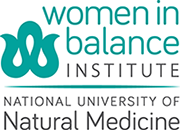What’s That Lump?
By: Malea MacOdrum ND MSOM candidate 2014
“Has this lump always been there?” was the question posed by my nurse practitioner several months ago while I was in for my annual well woman exam. My answer was simple. “No,” I replied. But as she continued her exam, my mind immediately traveled back 16 years when my mother was diagnosed and treated for breast cancer. She was 46 at the time and I remember clearly the stress and uncertainty that the diagnosis had on her and our entire family. I remember how weak she was after her radical mastectomy and I remember the countless doctor appointments and scans and meds needed to ensure that the cancer stayed at bay. I tried to stay calm during my appointment, but I couldn’t help but wonder, “Do I have breast cancer now, too?”
We are primed as women to think the worst when a doctor finds a lump, bump or bulge on our breast. And it is true that over 200,000 will be diagnosed with breast cancer this year and about 1 in 8 of us will be diagnosed with breast cancer at some point in our lives. However, far more of us will experience a benign breast condition.
Below are a few common breast conditions that are NOT cancer
Cysts
Breast cysts are fluid-filled sacs that often feels like a discrete mass. They are common in women age 30-50. Simple cysts are typically non-cancerous and are not correlated with an increased risk of cancer in the future.
Fibroadenomas
Fibroadenomas consist of fibrous as well as glandular breast tissue and are most common in younger women in their teens and twenties. They will often regress after menopause. When palpated, they tend to be very movable, leading some people to describe them as “breast mice.”
Intraductal Papillomas
These are small non-cancerous tumors that grow in the milk duct of a breast. Intraductal papillomas are common, affecting up to 5% of the population. If palpable, they are felt close to the nipple and may cause nipple discharge. They are most common in women age 35-55.
Fibrocystic Breast Changes
This is your basic lumpy bumpy breast that occurs during or right before menstruation in about half of women. These cyclical changes often begin in your 30s and improve during menopause. While you may feel irregularities, these changes are generally diffuse and bilateral.
What to Do?
If you DO find a new breast lump during your regular self-checks it is important to have it examined by a healthcare professional. From there, your doctor will likely recommend further evaluation, normally starting with a diagnostic breast ultrasound and/or a mammogram. In some cases a biopsy will be necessary, which allows doctors to look at your tissue under a microscope to determine definitively if a mass is benign or cancerous.
For my journey, I was sent for a diagnostic breast ultrasound, which revealed a series of simple cysts. While my condition is totally benign and is not correlated with increased risk of later breast cancer, because I have a first degree relative who DID have breast cancer it is important for me to keep a close eye on my breast health. I will continue to do monthly self-checks and get my annual exam and I will also begin regular mammography beginning at age 35.

